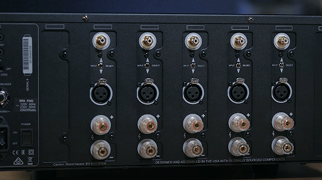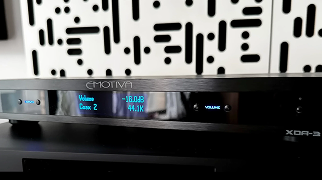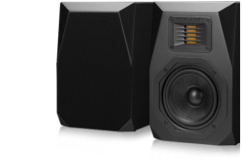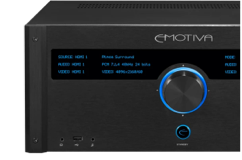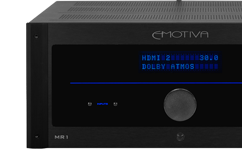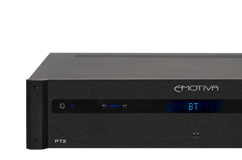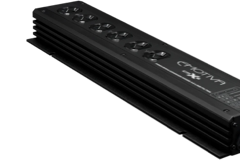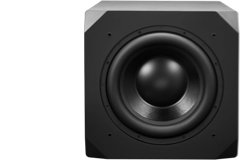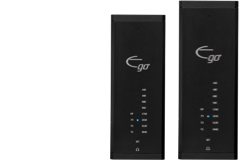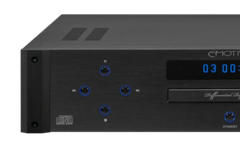“The iPod was a real game changer for me, not in terms of audio quality of course, but in terms of having a portable personal library and playlists. It changed how and when I listened to music, my control over that music and that made my LIRR commute at the time far more tolerable. At first memory was pretty limited but it took off quickly and gave me a lot more choices of what to play next.” – Elliot L., NY
Portable audio has been around nearly since the first transistor radio was introduced in 1954. Thanks to the invention of the transistor seven years earlier, consumers the world over were able to stick a low-quality earphone in the ear of their choice, and if the sound was at best highly compressed and occasionally staticky, music, sports, and news were now available to follow us around as we chose.
It’s no coincidence that the transistor radio shot to fame in tandem with the then-burgeoning Rock & Roll phenomenon. For the first time, young listeners were taking a non-stop deep dive into the raucous new sound, as their parents used their equipment for keeping track of the day’s events.

What they had in common, and what persists today, is the addictive quality of portable audio. And, while it’s true that Emotiva is first and foremost a home audio company, we not only acknowledge the importance of portable audio to the overall market, but most of us wouldn’t think of leaving home without music pumping into our ear canals no matter where we are: on the street, at the gym, and when making our way through the airport. (Especially at the airport.)
“[iPod] enabled me to grind out a lot of running miles which I don’t think I'd be able to do without it. Still use portable music for the long runs.” – Larry A., NY
If the transistor radio introduced the overall idea of portable audio, Sony’s Walkman cassette player elevated the experience to, well, not exactly audiophile levels, but it was a quantum leap forward in terms of sound quality and control over content. Simply slip in a cassette tape, hit play, or fast forward until the song of choice was found.
The name “Walkman” became as synonymous with portable audio as did Kleenex with tissues, and it stayed that way for some time, at least until cassettes gave way to compact discs. As much as leading audio brands promoted the idea of portable CD players, their size made carrying a collection of favorite tunes an awkward and ultimately skipped experience.
Then it happened. Years after the portable CD player became a semi-successful product that more often than not sat in consumers’ drawers more than it was used for music, the highly compressed but otherwise lovable mp3 format simplified the task of ripping or downloading music, thereby changing the way people consumed music.
There’s no need to discuss the legal and illegal options for obtaining music in the late 90s and early 00s. Suffice to say that, legally acquired or not, mp3 files were small, sound anywhere from “meh” to “really good,” and, most important, drove tech developers to focus on creating a portable product that took full advantage of the promise of digital audio files.

“I went from carrying a portable CD player and perhaps a dozen CDs at a time to a much smaller device that held a week’s worth of music. Completely changed how I enjoyed music outside home. And that’s before getting to the notion of playlists.” – Marty L., Vancouver
Though not the first mp3 player, Apple’s iPod, which debuted in 2001, was the epitome of design perfection. Bridging the gap between high-tech for the home and commonplace portable audio, the iPod’s intuitive operation, sleek industrial design, and near-inexplicable cool factor made it a massive success out of the gate. The original model, which hit the streets in October ’01, sold 25,000 units by the end of the year.
That’s an impressive amount, especially over 90 days, but it’s the proverbial drop in the bucket compared to what was to come. As cited in a 2006 CNET article: “IDC analyst Bryan Ma said Apple may take some heat for entering the consumer electronics market, which typically has lower profit margins than Apple gets from its computers. But, he added, the iPod could serve an important function: convincing people to buy a Mac instead of a PC.”
No doubt that was part of the effect but increasing Mac sales pales in comparison to the real benefit: 1,000 songs on a device. Easy to add, delete, and swap as needed.

“I had the Rio mp3 player, saw the future of portable music though it only held 12 songs. The iPod added usable storage, a typically slick interface, and the ability to manage and sync music across multiple devices.” – James W, NY
Originally released with a whopping 5GB storage capacity that today is less than most USB thumb drives, the first iPod was unlike anything the market had seen, including then-current mp3 players that were high on clumsiness and void of aesthetic. From the start, the click wheel radically changed what was thought of as typical player controls: gone were the buttons, replaced by a wheel with a haptic sensation and noticeable click that simplified the search and play process.
And, for the audio savvy, there was a bonus that was not heavily promoted, if at all: the iPod played AIFF files! Thick, luxurious, spare-no-detail full-resolution files that sound so much better than a typical mp3 that, even with an off-the-shelf on-board DAC, were demonstrably better than commonplace compressed digital audio.
From 2001 – 2015, the name iPod remained synonymous with portable digital audio. However, the introduction of the iPhone in ’07, with its touchscreen and a list of menu options that rivaled many home PCs, gave consumers a newer, more functional, and – let’s face it – shinier device to play with and enjoy. Streaming audio, too, changed the way users interacted with the music, in that it was now possible to access thousands of audio streams wherever and whenever a Wi-Fi or cellular connection allowed.

Apple finally pulled the plug on iPod in 2015, but not before the 6th generation model brought total sales from line introduction to completion to more than 400 million units sold. As strong a success as any seen in the audio business, and one whose effect will be felt for the foreseeable future.
And again, this begs the question why a home audio company will celebrate a portable product. The answer is simple: if it successfully promotes listening to music, Emotiva Audio is its biggest supporter.
Share Post



